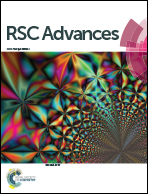First-principles studies of electronic properties in lithium metasilicate (Li2SiO3)
Abstract
Lithium metasilicate (Li2SiO3), which could serve as the electrolyte material in Li+-based batteries, exhibits unique lattice symmetry (an orthorhombic crystal), valence and conduction bands, charge density distribution, and van Hove singularities. Delicate analyses, based on reliable first-principles calculations, are utilized to identify the critical multi-orbital hybridizations in Li–O and Si–O bonds, 2s–(2s, 2px, 2py, 2pz) and (3s, 3px, 3py, 3pz)–(2s, 2px, 2py, 2pz), respectively. This system shows a huge indirect gap of 5.077 eV. Therefore, there exist many strong covalent bonds, with obvious anisotropy and non-uniformity. On the other hand, the spin-dependent magnetic configurations are thoroughly absent. The theoretical framework could be generalized to explore the essential properties of cathode and anode materials of oxide compounds.



 Please wait while we load your content...
Please wait while we load your content...